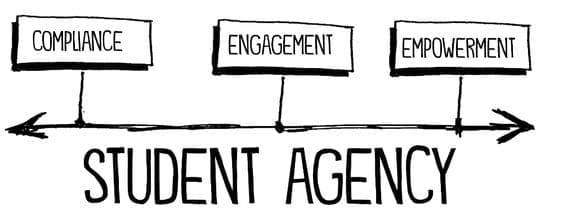
Why Empower Student Learning So Important 6 Truths came about when I read Spencer and Juliani use the Louis Braille story to focus on giving kids the knowledge and skills to pursue their passions, interests, and future.
Louis Braille as a young kid was trying to make some holes in the leather using a sharp-pointed tool called an awl. According to John Spencer and A.J Juliani, authors of Empower, while Louis was pressing it into a piece of leather, the awl slipped and caught Louis in the eye. He was rushed to be seen by surgeons, but the doctors could not save his eye, and they put a patch on it. Weeks later, Louis’s other eye became infected, and by the age of five he had lost all sight.
Louis’ parents did not treat him like a disabled, instead his father created various canes for Louis to travel around the village. Louis continued to learn, tinker and create despite the loss of sight.
Why empower student learning is so important? Let’s find out.
6 Truths Empower Student Learning According to Spencer and Juliani
Truth # 1: Every child deserves to own their learning. Teachers can empower student ownership of lifelong learning.
Authors (2017) believe this is the reason we educate students for their benefit. Spencer and Juliani support the idea that “When we give students choice, allow for inquiry, and foster creativity, we see the amazing things they can do.” (pg 10) This only matters when students own their learning.
Technology, as Spencer and Juliani put it, is where students can learn, collaborate, and connect to anyone in the world. Authors (2017) note “As teachers, we have to embrace the notion that technology can open up a world of learning opportunities, and then give our students the chance to own those opportunities.” (pg 10)
Truth # 2: Every child in your class is someone else’s whole world. Empowering students transforms our social/human connections.
Every child in your class is someone else’s whole world hits home for Juliani, because he watches his daughter go to school everyday. He believes that empowering learning brings us closer through communication, collaboration, and sharing meaningful work that brings the learning to life. More than that, “it transforms our social/human connections with little moments that can make a kid’s day or make a parent proud.” (pg 10)
Truth #3: Stories will always shape us. They will always help us learn. Empower students to create and share their learning stories.
As I write more blog posts, I begin to believe that stories that authors (2017) write are “one of the best ways to teach and a favorite way of ours to learn.” (pg. 10)
Spencer and Juliani (2017) write that story telling transforms our world because technology has expanded our depth of story and allows us to share stories wider and farther than ever before. So, as teachers and students, we can use technology to transform our story telling and how we learn.
Spencer and Juliani (2017) write, “The true power of a story comes from two things: learning from the story and then sharing your story with an audience and with the world. Empowered learners know stories are the gateway to pursuing their passions and future.” (pg. 10)
Truth #4: The only thing you can prepare students for is an unpredictable world.
Authors strongly believe that as teachers, our job is to prepare our students for anything. Teachers are the guides, and our students are the heroes of the story.
Authors (2017) consider “Teachers can be guides who empower learners, because we can be free of always having to be the content experts (especially as content continually changes). Instead, we share with our students that we too are master learners. Knowing how to learn is a skill we can share with our students to help them learn anything.” (pg. 10)
Truth #5: Literacy is about learning. And learning is about unlearning and relearning.
Spencer and Juliani (2017) support “Empowered students are part of a learning environment where unlearning and relearning is the norm. This type of environment is where we can get new information and analyze it, apply it, and use it to create or evaluate. Empowered learners adopt a mindset that praises unlearning and relearning, and treats the process as a continuum.” (pg.10)
Truth #6: As teachers, we have a huge impact on our students’ lives. Empowering our students amplify that impact.
As teachers, we all know that we can make a huge impact on our students. One statement Spencer and Juliani write made me think about education today: “These six truths help us to stand firm against the fads and next “best thing” in education, while focusing on what works to make our learners’ experience both meaningful and relevant while they are in school.” I believe the emphasis is on what works to make our learners’ experience meaningful and relevant, while they are in school.
Take Away
I searched for information about students’ ownership of learning on Pinterest. I found the spencerauthor.com website. I perused some of his articles and am impressed by his passion on this subject. I am convinced that the goal of teaching is to empower student ownership of lifelong learning. To do this, we need to share the knowledge and skills of how to learn with our students. So, I started a series of blog posts on how to develop student ownership of learning. I provided the links below to how to develop student ownership of learning series so far:
What is the Look and Sound of Student Ownership?
How to Develop Student Ownership What They Are Learning
Reference
Spencer, J., & Juliani, A. (2017). Empower. Impress, LP. https://bookshelf.vitalsource.com/books/9781946444424
